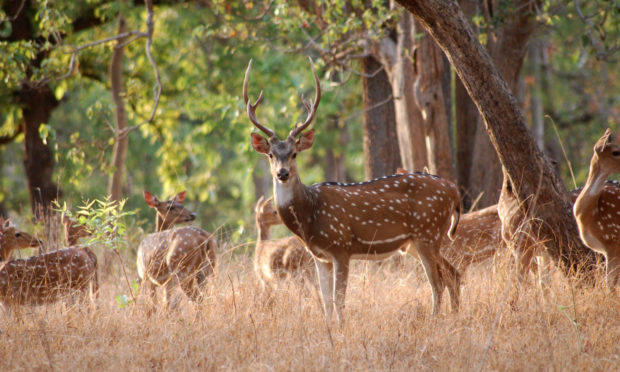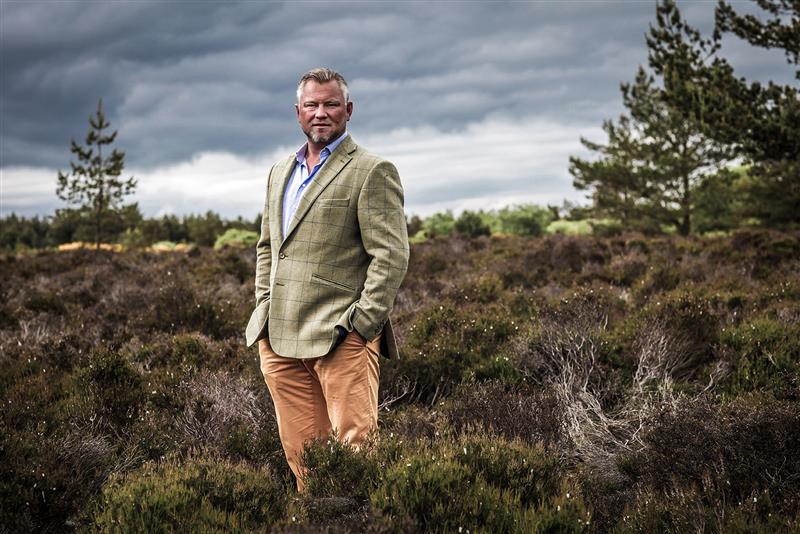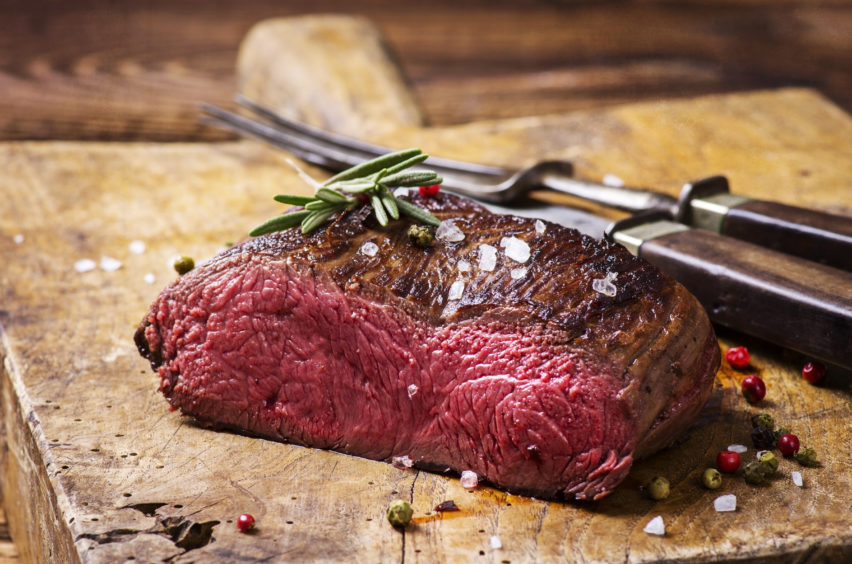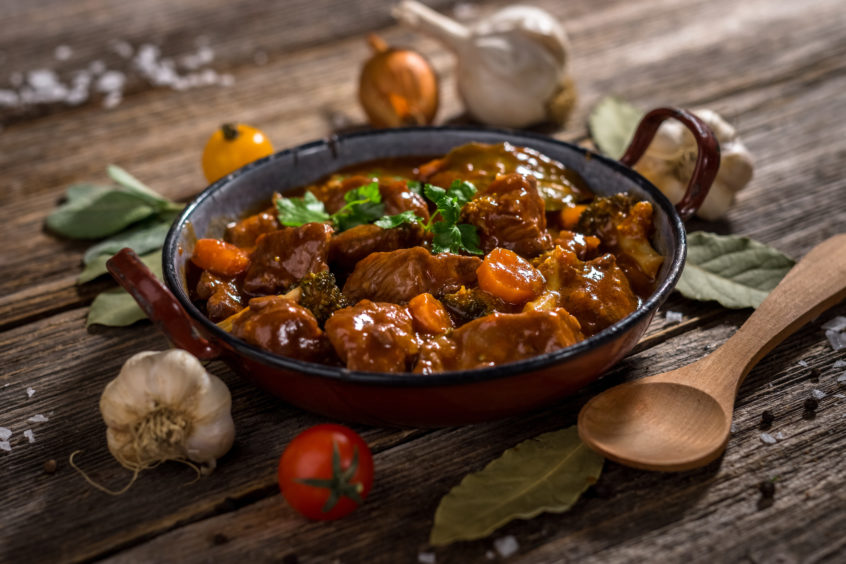The health benefits of eating venison have seen the market for the meat steadily grow over recent years into a multi-million-pound industry.
Consumers are now more interested in knowing where their food comes from and are looking for more healthy red meat alternatives.
Gram for gram, venison contains less fat than a skinless chicken breast and is an excellent source of iron, delivering more than any other farmed meat.
Being wild and grass fed, it is also much leaner than beef, and contains less saturated fat.
In addition, venison is also rich in conjugated linoleic acid, which is thought to support a healthy heart, iron and B vitamins, which help you convert the food you eat into energy, and play a vital role in brain and nervous system function.
The venison market is now estimated to be worth more than £14.4 million to the UK grocery retail trade.
According to research, half of those eating venison at home bought it in a supermarket compared to 25% from a butcher, and almost half (47%) said that they would be more likely to choose venison if it was more easily available in supermarkets.
Healthy alternative
Dundee-based wild venison supplier Highland Game has been championing the meat as a healthy alternative to other red meats for more than 20 years.
Highland Game wants to increase food-at-home consumer demand for venison by growing the availability of the healthy meat option in supermarkets across the UK.
Managing director Christian Nissen said that, like many markets, the venison trade suffered during the Covid-19 lockdown, but demand is expected to continue to grow as life returns to normality.
“While we still face extremely challenging market conditions, demand is increasing year-on-year for venison products and we’ve been working hard to widen that appeal.
“There is a growing army of health-conscious consumers looking for a sustainable, low-fat alternative to red meat and this is a significant opportunity for our business.
“Highland Game is increasing its market penetration through retail promotions with the direct aim of making it more affordable for consumers to sample and enjoy.”
And now that we are slowly beginning to return to normality and people are looking at their diets more, has there been an increase in demand for venison?
There is a growing army of health-conscious consumers looking for a sustainable, low-fat alternative red meat and this is a significant opportunity for our business.
Christian Nissen, Highland Game.
“It is too soon to say. However, we do know that health continues to be a more important factor on consumer buying decisions,” added Mr Nissen.
“Value is also key, and will become even more important as consumers look to tighten purse strings, and Highland Game is working with our retail partners to offer competitive value versus other proteins.
“As we gain wider distribution with supermarkets, in turn, our venison products will become even more affordable.”
£14.4m market worth
The popularity of venison has grown in the last five to 10 years. Mr Nissen continued: “Venison is now worth £14.4m to the UK Grocery retail market (2019-2020), up 10.9% from the year before.
“We’re definitely seeing more and more people starting to eat venison as it provides a point of difference in the meat category and healthy protein alternative, both in terms of nutritional benefits and origin.”
And has an increase in demand resulted in more deer farms being created to deal with the upsurge?
“From a UK perspective, this is something we continue to grapple with. At present farmed deer is a very low consideration in terms of total output, however the aim is to expand this. The wild deer Highland Game sources is a by-product of the forestry industry,” revealed Mr Nissen.
“There are quotas in Scotland, so trained hunters have to manage the deer population in line with these. Highland Game buys deer that have been dispatched as part of culls that are intended to prevent over-population, which means if consumers buy Highland Game venison they are aiding in the sustainable management of the wild deer population.
“The strategy for the Scottish Venison Sector in 2030 is supported by three aims to sustainably maximise the market growth potential for: wild venison by ensuring full value from the 3,500 tonnes culled annually and worth £7.25m at first sale; farmed venison by substantially increasing the farm sector output from 100 tonnes to 850 tonnes, achieved by growing the annual kill from 1.7k to 15k animals and growing the value to the sector from £540k to £4.6m at farm gate; innovation through collaboration involving both parts of the sector by utilising the unique but complementary strengths of the venison supply chains.”
Businesses badly hit
Widely used in the restaurant trade, the food sector output of the business was badly hit during lockdown as eateries were forced to close their doors.
“No signs yet for a recovery for venison in food service,” said the Highland Game chief. “However the main season kicks off next month so we will only know then.
“We are committed to working with the sector as it recovers and have exciting plans in the pipeline to help grow demand for venison products in the future.”
Last week, Highland Game launched a restaurant quality fillet. Tesco is stocking the new addition which extends the company’s partnership with the supermarket giant and is worth £3 million in sales per annum.
Mr Nissen added: “Sales in retail have remained consistent since lockdown, however with the launch of this new fillet in Tesco, and several other new products throughout the rest of the year, consumers will see more venison on supermarket shelves which will help to satisfy demand and increase sales.”
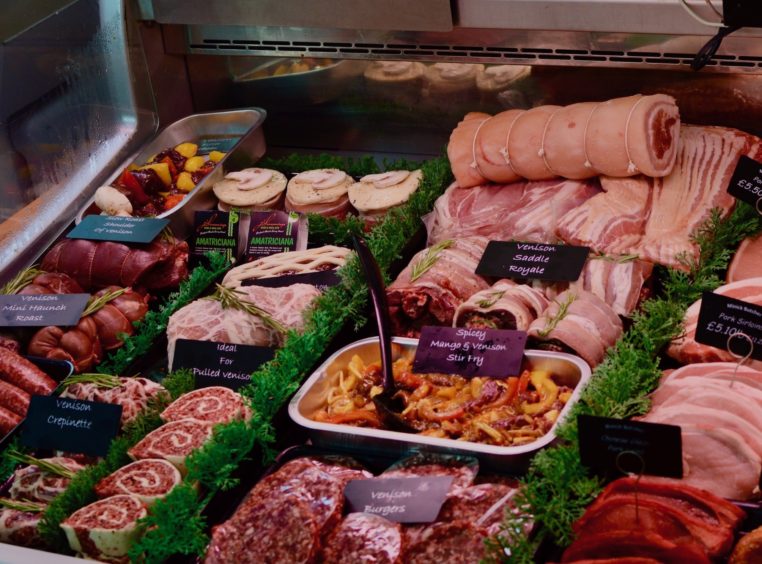
Scottish Venison Day
Meanwhile, Scottish Venison Day, which took place on Friday September 4, was marked this year by the launch of an initiative to promote the short supply chain from stalker or estate direct to their local butcher or restaurant.
Legislation allows the supply of small quantities of venison from the stalker within their own or their neighbouring local authority area or 50km, whichever is the greatest.
A recap of the relevant rules and best practice guidance for this short supply chain are being made available to stalkers on the Scottish Venison Association website.
Also available is new information for butchers including two new videos, one highlighting basic butchery of a roe carcass and the second featuring how butchers can add value to venison in the shop.
The Scottish Venison Association is also offering an introduction service for local stalkers to local butchers and vice versa, and free listings on its Where to Buy venison section of the website www.scottish-venison.info
Mairi Gougeon, Minister for Rural Affairs and the Natural Environment, said: “It is important that the venison sector finds new ways to strengthen and grow, particularly as we seek a green recovery from the impacts of the Covid-19 pandemic. As highlighted in the venison strategy, improving supply chains is crucial to the development of the sector.”
Cut food miles
Bill Bewsher, chairman, Scottish Venison Association, said: “This is a first-class initiative particularly at this time. More applicable to lowland Scotland than to upland estates, although relevant to them also, this initiative is designed to loosen up the short supply chain between stalker and butcher, to cut food miles, to simplify traceability, and to enable locally sourced, healthy meat to be sold locally.
“Whilst not solving the overbearing problems that the deer management sector is facing right now due to the Covid-19 crisis and the impact it has had on the restaurant, catering, and food service/events routes to market which will take time to recover fully, this should relieve a little of the pressure and facilitate supply to local specialist outlets.”
Gordon King, executive manager, Scottish Craft Butchers, added: “We are delighted to support this initiative which allows local butcher shops to connect with stalkers and sporting estates in their area.
“This gives us the opportunity to source venison in a short and direct supply chain. Venison is one of Scotland’s truly natural products direct from the glen.
“In the past few months consumers have really focused on shopping local and buying local. This also allows them to appreciate that they will also be supporting local businesses and jobs close to home.”
